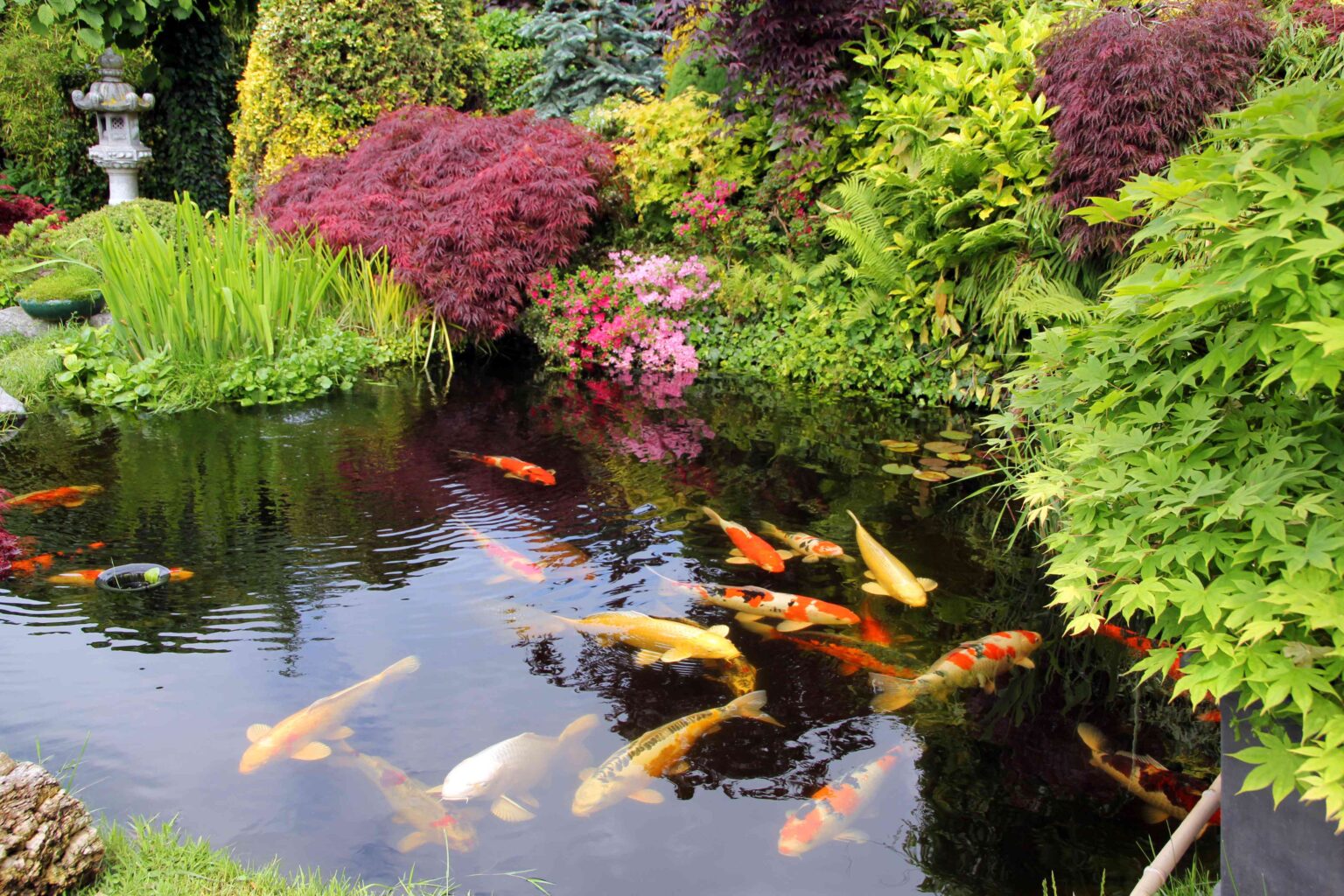It’s said that koi bring prosperity and good luck. True or not, what is certain is that koi will bring a splash of swirling color and a serene presence to your yard. Because koi are so hardy, maintenance is minimal. Learn how to build your own koi pond for a yard refresh.
Installing a koi pond is not cheap; on average, professionally installed koi ponds cost from $10,000 to $20,000. If you have it professionally maintained, expect costs of at least $3,000 per year. Or you can do the ongoing upkeep yourself for $500 to $1,000, depending on how big your pond is and how many fish you have.
If you’re making a koi pond from scratch, you can save considerable money by building one for under $2,000. The mechanical parts like pumps and filters will be your most expensive outlays. You can bring down expenses on your koi pond by planning out a smaller one, digging out the trench on your own, getting a prefabricated koi pond liner, and buying smaller, less expensive domestic koi fish that cost under $3 per fish.
Before You Begin
In the planning stages for making a koi pond in your backyard, budget out your materials, tools, and time. The larger you make it, the more expensive it becomes and the longer it takes. Expect that your pond will need to go at least 3 feet deep. You will need to plan for a water pump, filtration system, aeration, pond liner, surface skimmers, fish and food, and surrounding landscaping.
Consider building it on a hill if you want other features like a fountain or waterfall. Also, if making waterfalls, use the excavated dirt to form your cascades or contours for the waterfalls. Koi ponds don’t need a waterfall, but besides looking lovely, they provide aeration, which the fish need to survive.
Basics of Building a Koi Pond
With a koi pond, you’re building not just a garden pond but a habitat for living creatures. The needs of the koi determine many aspects of the pond itself.
Pond Depth
Though classified as coldwater fish, koi don’t necessarily love cold water. Nor do they do well in very warm water. Keep the water temperature moderate, from 59 F to 77 F.
Correct pond depth helps the koi regulate their own temperature. The koi pond should be at least 3 feet deep so that the koi can descend and stay cool in the summer. If the pond is deep enough, the koi will also be safer from any potential predators.
Pond Dimensions
Big fish need a big pond. For around five koi, your pond should be 1,000 to 1,500 gallons, minimum. Ten or more koi will need double that capacity: more than 3,000 gallons.
Visualize a 3,000-gallon pond as a space that’s 18 by 24 feet, with a depth of 3 feet. Scaling down to a 1,000-gallon koi pond, you still need to maintain that 3-foot depth because koi need deep water. With that depth, the dimensions of the pond would be 6 feet by 8 feet.
Pond Location
Picking the right location for the koi pond is important for the health of the koi, as well as for water quality and your enjoyment of the pond.
Keep the pond relatively close to the house so that you can bring the hose from the house’s outside faucet over to the pond. The side of the house also provides access to an exterior electrical outlet. Keeping the pond closer encourages regular maintenance.
Consider the balance of sun and shade throughout the day. Ponds in full sun grow algae faster than ponds in shaded areas. For the sake of the koi, too, it’s good to keep the water temperature moderate.
Pond Circulation
All ponds require some level of dissolved oxygen in the water, especially ponds with fish. Koi fish need dissolved oxygen to breathe. Oxygen also keeps the water healthy, enabling the beneficial bacteria to break down biological wastes in the water. Oxygenated water also discourages harmful bacteria from taking over a pond. An aerated pond also helps fish breathe in winter when the top of the pond ices over.
Fountains and waterfall features are natural aerators. However, if they should stop running, it can cause a breakdown in the delicate balance of the ecosystem. Deciding whether you need a dedicated aeration system depends on how many fish you have and the size of your pond. A small or medium pond heavily stocked with koi will likely need a backup aeration system.
Safety and Permitting
Before digging, call your local utility location service. Water, gas, electrical, and sewer lines are a minimum of 12 and 24 inches deep. Given the depth of the koi pond, the likelihood of inadvertently hitting a hidden line is great.
Small fountains or garden ponds may not need permitting, but a koi pond’s large size might require permits. Most types of plumbing and electrical work require permits.
How to Build a Koi Pond
Read the full article here
